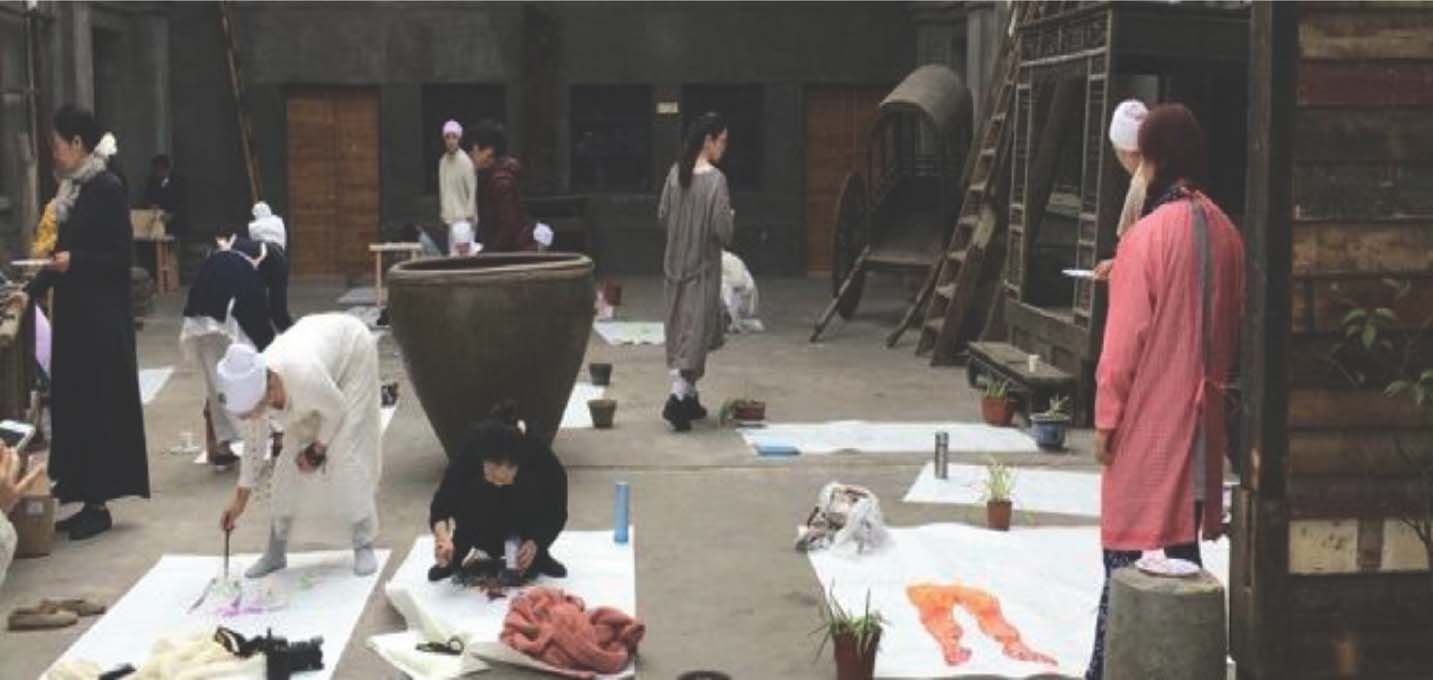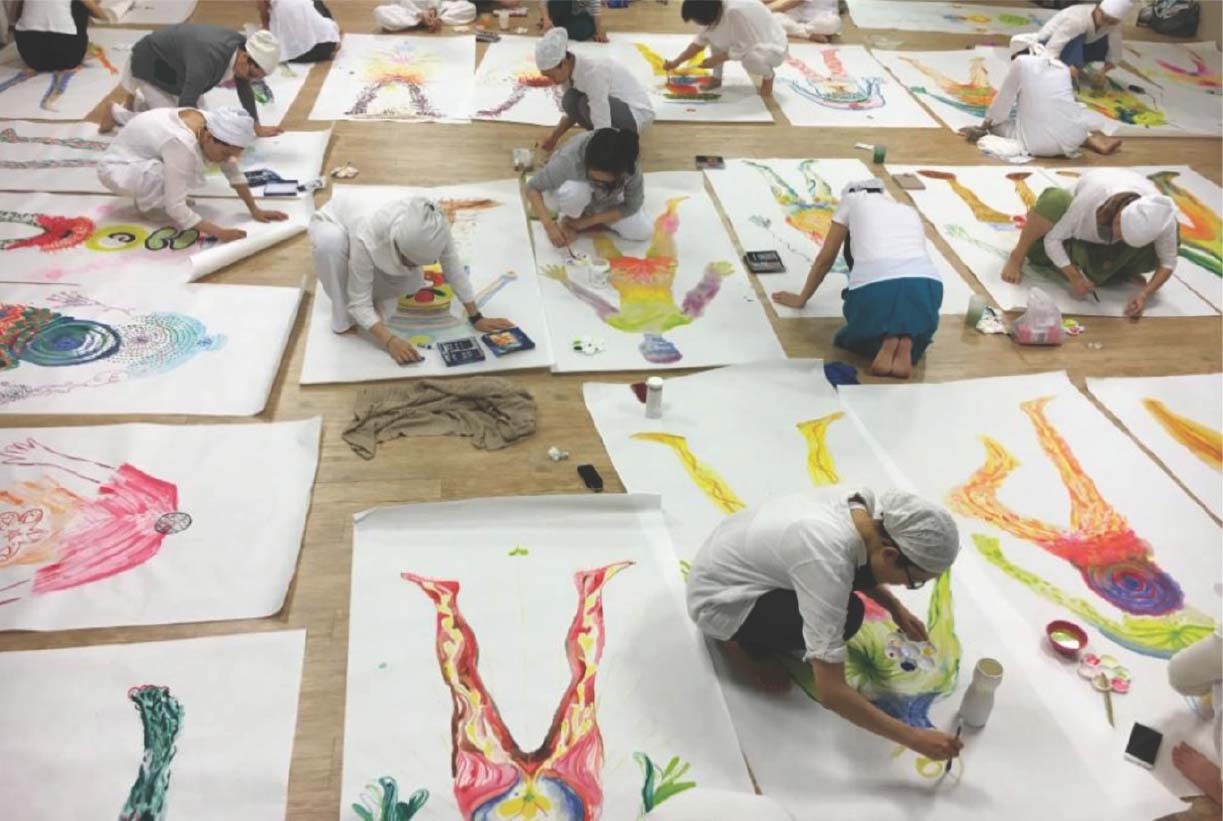
| Creative Arts Educ Ther (2016) 2(2):35–37 | DOI: 10.15534/CAET/2016/2/12 |
In Response to Ch’i and Artistic Expression from the Perspective of Art and Yoga
从艺术和瑜伽的观点回应Shaun McNiff的文章《“气”和艺术性表达》
Art & Yoga, USA

Art & Yoga, Shanghai, China 2016
It is a post-modern pleasure to respond to Shaun McNiff’s article on ch’i. Shaun has spent his life exploring how the arts heal, and he offers his reflections on ch’i to highlight foundational concepts in the creative arts therapies. I have been incorporating yoga and creative arts therapies since 1980, and researching how prana, as the life force is called in yogic philosophy, operates in the arts-based healing process. In Shaun’s discussion of ch’i, I recognize key foundational ideas I use in creative arts and yoga therapy groups and also in my art practice.
“There is a force in nature that flows through our bodies, minds, materials, movement, sounds and interactions. Artistic expression comes from this force. Healing comes from this force”. (Lumpkin, 1996)
In eighth century China, Wang P’o-mo (Wang the Ink Flinger) sang as he smeared ink on a scroll with his hands, kicked it with his feet, and scrubbed it with brushes. He soaked his topknot in ink and rammed his head against the paper” (Lumpkin, p. 53).
Paintings made by Wang and other Tang and Sung Dynasty painters resulted in compelling landscapes (no examples of Wang’s paintings survive). Wang’s contemporaries understood this as evidence of his harmony with the life force.
Like Wang P’o-mo, we cannot manufacture ch’i, we cannot control ch’i, but we can skillfully design the conditions where it appears. As Shaun points out breath, rhythm, repetition and percussion open the flow of this natural force. Likewise establishing a community practice of non-judgment towards each other and the art allows the community’s creativity (ch’i) to enhance the individual’s experience of flow and creativity.

Art & Yoga, Taipei, Taiwan 2016

Art & Yoga, Taipei, Taiwan 2016
“Utter tranquility, the distinction between
yes this and no that lost, I embrace primal
unity, thought and silence woven together,
that deep healing where we venture forth”.
Hsieh Ling-yun, 422-23AD (Hinton, D., 2001, p. 5)
Our globe is rich with diverse wisdom and there is much to be gained by studying outside our given cultures. Whether we follow ch’i, prana or soul, we know that whatever happens to any one of us, happens to us all. Today, it is essential that we sense the interconnectedness of life. As I presented in Art & Yoga (2011), this sense of connection requires a departure from the individualistic, introverted, and competitive approaches of the past. Through creative collaboration and co-creation, we not only heal individually but hold the keys to the healing of our world.
About the author
Hari Kirin Khalsa (b. Joan Hanley) is a professional artist offering workshops and trainings in Art & Yoga around the world (artandyoga.com). Her book, Art & Yoga: Awakening Kundalini in Daily Life (2011), was translated and released in China and Taiwan in 2016.
References
Hinton, D., (trans.) (2001). The Mountain Poems of Hsieh Ling-yun, New Directions Publishing.
Khalsa, H. K. (2011). Art & yoga: Kundalini awakening in daily life. Santa Cruz, NM, KRI Publishing.
Lumpkin, L. (1996). Deep design. Los Angeles: Art Issues Press.